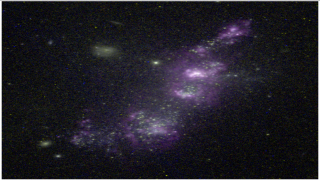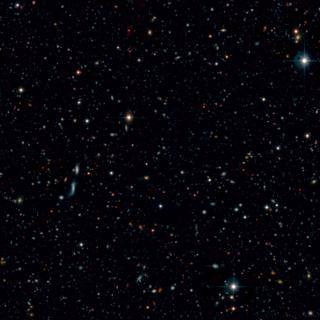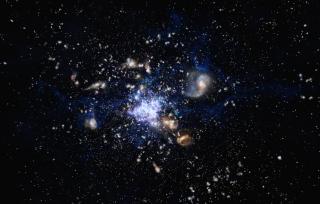Bibcode
Arrabal Haro, P.; Rodríguez Espinosa, J. M.; Muñoz-Tuñón, C.; Pérez-González, P. G.; Dannerbauer, H.; Bongiovanni, Á.; Barro, G.; Cava, A.; Lumbreras-Calle, A.; Hernán-Caballero, A.; Eliche-Moral, M. C.; Domínguez Sánchez, H.; Conselice, C. J.; Tresse, L.; Alcalde Pampliega, B.; Balcells, M.; Daddi, E.; Rodighiero, G.
Bibliographical reference
Monthly Notices of the Royal Astronomical Society, Volume 478, Issue 3, p.3740-3755
Advertised on:
8
2018
Citations
35
Refereed citations
33
Description
We have undertaken a comprehensive search for both Lyman alpha emitters
(LAEs) and Lyman break galaxies (LBGs) in the Survey for High-z
Absorption Red and Dead Sources (SHARDS) Survey of the Great
Observatories Origins Deep Survey North field. SHARDS is a deep imaging
survey, made with the 10.4 m Gran Telescopio Canarias, employing 25
medium band filters in the range from 500 to 941 nm. This is the first
time that both LAEs and LBGs are surveyed simultaneously in a systematic
way in a large field. We draw a sample of 1558 sources; 528 of them are
LAEs. Most of the sources (1434) show rest-frame UV continua. A minority
of them (124) are pure LAEs with virtually no continuum detected in
SHARDS. We study these sources from z ˜ 3.35 up to z˜ 6.8,
well into the epoch of reionization. Note that surveys done with just
one or two narrow band filters lack the possibility to spot the
rest-frame UV continuum present in most of our LAEs. We derive
redshifts, star formation rates, Lyα equivalent widths, and
luminosity functions (LFs). Grouping within our sample is also studied,
finding 92 pairs or small groups of galaxies at the same redshift
separated by less than 60 comoving kpc. In addition, we relate 87 and 55
UV-selected objects with two known overdensities at z = 4.05 and z =
5.198, respectively. Finally, we show that surveys made with broad-band
filters are prone to introduce many unwanted sources (˜20 per cent
interlopers), which means that previous studies may be overestimating
the calculated LFs, specially at the faint end.
Related projects

Starbursts in Galaxies GEFE
Starsbursts play a key role in the cosmic evolution of galaxies, and thus in the star formation (SF) history of the universe, the production of metals, and the feedback coupling galaxies with the cosmic web. Extreme SF conditions prevail early on during the formation of the first stars and galaxies, therefore, the starburst phenomenon constitutes a
Casiana
Muñoz Tuñón

Evolution of Galaxies
Galaxy evolution is a crucial topic in modern extragalactic astrophysics, linking cosmology to the Local Universe. Their study requires collecting statistically significant samples of galaxies of different luminosities at different distances. It implies the ability to observe faint objects using different techniques, and at different wavelengths
Jorge
Cepa Nogue

Molecular Gas and Dust in Galaxies Across Cosmic Time
Two of the most fundamental questions in astrophysics are the conversion of molecular gas into stars and how this physical process is a function of environments on all scales, ranging from planetary systems, stellar clusters, galaxies to galaxy clusters. The main goal of this internal project is to get insight into the formation and evolution of
Helmut
Dannerbauer